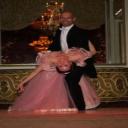Yahoo Answers is shutting down on May 4th, 2021 (Eastern Time) and the Yahoo Answers website is now in read-only mode. There will be no changes to other Yahoo properties or services, or your Yahoo account. You can find more information about the Yahoo Answers shutdown and how to download your data on this help page.
Trending News
Find angles in acute triangle ABC?
Point O is the center of the circumscribed circle. Line BO intersects side AC at point D. Line CO intersects side AB at point E. ∠BDE=50 degrees. ∠CED=30 degrees.
Find angles A, B, and C.
Nice try, Bre and Questor. And the correct answer is different...
EL, everything is on a plane. Questor made correct picture.
This is the Questor diagram:
..........................B
…….....….__----‾‾/|\‾‾‾----__
..…….._-‾‾......../..|...\.......‾‾-_
…...…/......…./.....|…..\....….‾-_
….…/….E../…..…|.....…\.....…\
……|……/•\……...|..…..…\…....|
……\…/……...\....•O.….……\.../
.…A.\/_________\|_________\/C
...……‾-_…………D……....._-‾
…...……‾--__……...……_--‾
.....….……….‾‾‾‾---•--‾‾‾‾
...........................M
Mielu Istetz was the first who posted correct solution. It's a pity that he decided to remove his answer.
Questor, all answers are appreciated. Every answer contains a valuable point that is helpful to understand the solution.
Merry Christmas and Happy New Year for everyone!
4 Answers
- QuadrilleratorLv 51 decade agoFavorite Answer
It should be clear that A=50 since <BOC=100. Also, B = 70, C=60. To prove this, I'll show a construction that gets to the stated conditions. Then I'll assert that the construction is unique.
Consider arbitrary circle O with radius r, and chord CB such that <BOC=100. Extend CO through O to E so that CE=CB. Let OE=e so that
(1) r + e = 2r cos(40) or
(2) e = r(2r cos(40) - 1). Also, recall that in general
(3) cos(3x) = 4cos³(x) - 3cos(x)
Now extend BE to intersect circle O at A (hence <A=50), and extend BO to intersect AC at D (so that <DOE=100). Since ΔCEB is isosceles, <CBA=70 and <ACB=60. So, ΔDCO is 80-20-80 so that DC=r. Find G on AC so that EG || BD, so that ΔGCE is also 80-20-80 with DG=e and <ADB=<AGE=100. Since ΔGCE is isosceles with base angle 80:
EG = 2(r+e) cos(80)
= 4r cos(40) cos(80), from (1)
= 4r cos(40) (2cos²(40) - 1)
= (2cos(120) + 2cos(40)) r, from (3)
= (2 cos(40) - 1) r
= e, from (2)
Hence, ΔDGE is 50-80-50 isosceles. Therefore, <ODE=50 which implies <DEO=30.
The above construction to produce ΔDOE as 50-100-30 for a fixed O, r is unique. Proof: Make the above construction, only extend CO to E' such that CE' ≠ CE. Except for the letters O, C, B, denote all the letters in the revised constuction with an additional apostrophe such as D' for D. Note that <D'OE' stays fixed at 100.
If CE'>CE then OD'<OD and OE'>e, hence <D'E'O < 30.
If CE'<CD then OD'>OD and OE'<e, hence <D'E'O > 30.
QED.
PS. Merry XMas to my Yahoo Answers friends.
- MadhukarLv 71 decade ago
Answer:
â A = 50°, â B = 60° and â C = 70° as solved below. Part of the solution is obtained graphically and verified to be correct.
From the given condition, â BOC = 100° => â A = 50°.
Let angle DCO = x
BOC is isosceles triangle in which â OBC = â OCB = 40°
â COD = â BOE = 80°
Applying sine rule to Î ODE, Î ODC and Î OEB,
OD/OE = sin30°/sin50°
OD/R = sinx/sin(100°-x) and
OE/R = sin(50°-x)/sin(50°+x)
=> OD/OE = sin30°/sin50° = [sinx * sin(50°+x)] / [sin(100°-x) * sin(50°-x)]
Solving this equation for x will give â B and â C of Î ABC,
as â B = 40°+ x and â C = 90°- x
The value of x was graphically found to be nearly 20° and verified as under to be true by plugging in the RHS of the above equation.
RHS
= [sinx * sin(50°+x)] / [sin(100°-x) * sin(50°-x)]
= sin20° sin70° / sin80° sin30°
= 2sin20°sin70° / 2sin40° cos40° [taking sin30° = 1/2]
= (cos50° - cos90°) / 2cos50°sin50°
= (1/2)cos50° / cos50° sin50°
= sin30° / sin50°
= LHS.
=> B = 40° + x = 40° + 20° = 60°
and C = 90° - x = 90° - 20° = 70°.
- ReyvrexLv 61 decade ago
Found my compass. The triangle is an isoceles triangle.
B= 80 (Edit: this is not so)
A= 50 <=== this one stays, it's quite OK
C = 50 (Edit: this is not so)
..........................B
…….....….__----‾‾/|\‾‾‾----__
..…….._-‾‾......../..|...\.......‾‾-_
…...…/......…./.....|…..\....….‾-_
….…/….E../…..…|.....…\.....…\
……|……/•\……...|..…..…\…....|
……\…/……...\....•O.….……\.../
.…A.\/_________\|_________\/C
...……‾-_…………D……....._-‾
…...……‾--__……...……_--‾
.....….……….‾‾‾‾---•--‾‾‾‾
...........................M
âABC is an isoceles triangle (Edit: this is not an Isoceles
..................triangle, the rest stays. They are.)
âBOC.......isoceles
âBOA.......isoceles
âMOC...(when connected, is an isoceles triangle)
âMOA...(when connected, is an isoceles triangle)
âAOC...(when connected, is an isoceles triangle)
These are isoceles triangles of varying base lengths, only the paired sides are equal to R, radius of the circle.
( I think, Quadrillerator and Mielo istetz has got it figured. I only got up to the graphics and thought it was it.)
==> Anyone of you guys who would like my diagram as reference for your notation, you may Copy and Paste it in your solution now. I will delete mine afterwards because I am accumulating more TUs although mine is an incomplete answer. It would not look good.
- 1 decade ago
IF D and E are in the exact centers of the line segments they intersect, THEN...
A=80
B=50
C=50
I THINK...
Source(s): I took Geometry last year and passed with an A all year long.







